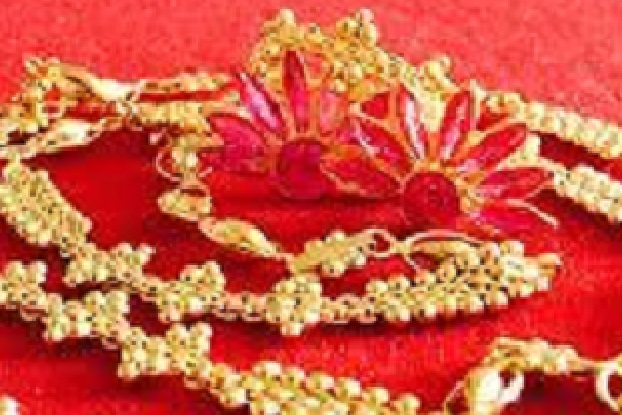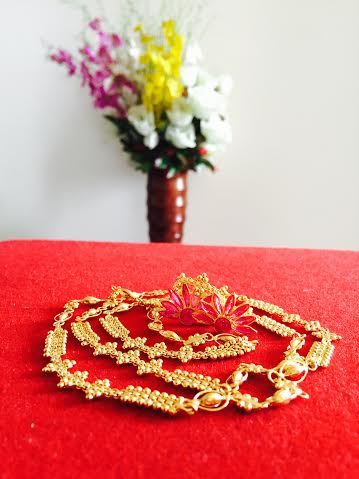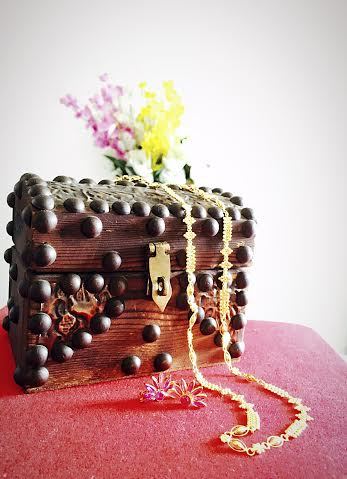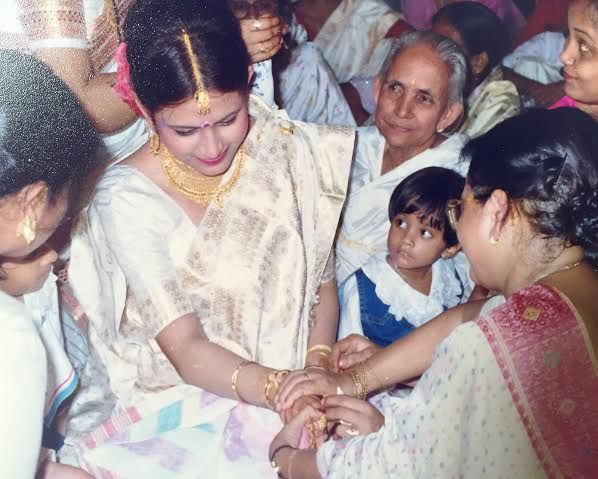
What a rarity it is, a material thing that is timeless. A piece that gets better with age, a piece that tells a story, a piece that can be passed on from generation to generation. Such a thing that increases in value in a measurement more substantial than money … in what it means to you, where it came from, the people it reminds you of, and the story behind it.
The charm of the heirloom is its ability to become a vehicle for a story. It’s a cherished memento that reminds you of a person and what you shared together. These earrings and necklace are a reminder of my roots.

Aata (grandfather) procured this beautiful traditional necklace while escorting a Scottish official who was writing a book on the Sonowal Kacharis. The head of this special tribe gifted him these golden earrings decorated with vibrant red gemstone, ruby (mina) made by craftsmen from Jorhat. They became great friends.
Aata gave the necklace to my great grandmother and the earrings adorned the ears of my beautiful Aai (grandmother) who thereafter gifted them to my mother for her wedding. For Ma it was not just a piece of gold. It was a symbol of love and care, affection and prestige, of friendship and bonding.
She would wrap them in a thin red piece of paper and keep them in layers of cotton inside her jewelry box. That’s the exact same way Aai kept them, she would say. That’s how Aai had taught her to keep them. She would show me once in a while and I remembered how every time I tried to put it back in the box she would say, “No, no, no! Not like this Majoni,” and would place the sunflowers back into the folds of its soft bed in an almost ritualistic way. Nodding her head back and forth she would whisper, “She wouldn’t have done it like this. She would have … ”

There is a certain imperfection to all things handmade, which becomes mutually exclusive with the preciousness of that item. Someone has worked on them with their own hands, delicately carving and melting the gold, laying in the jewels and polishing the surface.
The ornaments were handed over to me on my wedding. It was during the the first function called Jurun. I remember Aai and Ma gracing me with the exquisite pieces of gold that hold love, history, dollops of emotion and a story to carry forward. It was a responsibility being handed over to me. I could feel the weight.

Jurun in our Assamese community means the formal engagement when the groom’s family gives gifts to the bride. In the picture my beautiful Aai looks at me with so much love in her eyes; her favorite granddaughter was bedecked with exquisite jewelry and gifts by the groom’s family. Her eyes would get moist at times. She would hold my hands and touch my cheeks occasionally; fix the necklace she gave and murmur, “Don’t forget our tiny little gift Majoni.”
Every time I wear it my heart is filled with an aching warmth. I love that for even the shortest of time I share something with these incredibly wonderful women. It kisses my skin and leaves me with nostalgia; the fact that I share the objects that connect us all to our roots and our soil.
I think it is all a matter of love; the more you love a memory the stronger and stranger it becomes. ― Vladimir Nabokov
* * *
Photographs provided by the author. The original version of this post is online at Arunima Dutta’s site The Essential Me, where she writes about her childhood and adult experiences, her transformation from a shy girl to winning Mrs. India World, losing her mother to cancer and finding a way to live after tragedies.












